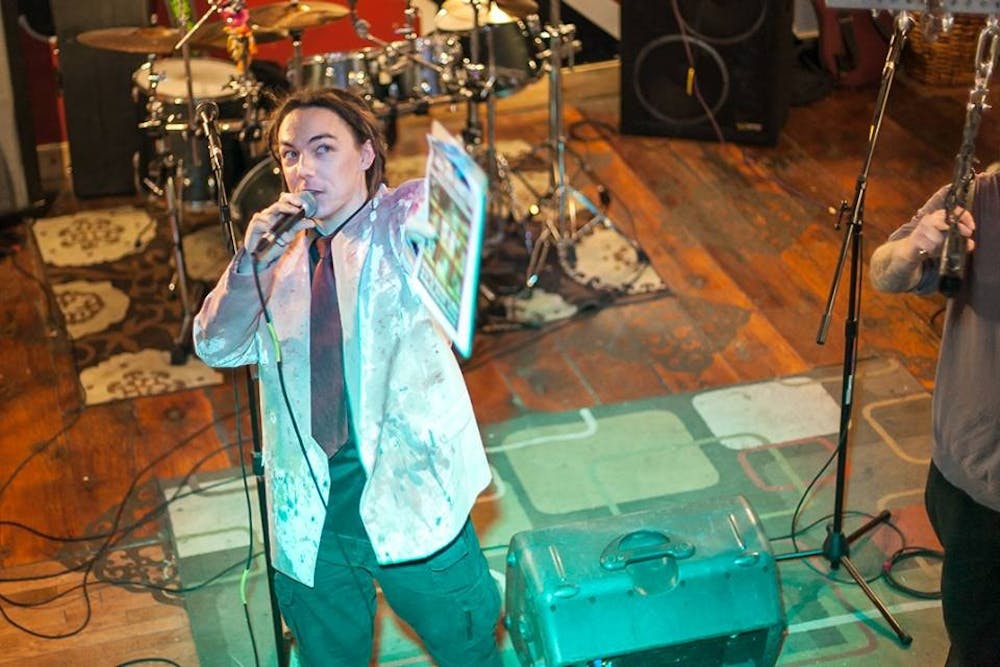Start Suspension
Get involved with suspension by contacting Subculture Suspension Arts through their Facebook page or email Graham Watson at gtwatson@bsu.edu.
Those interested can also email Drew Miniear, the founder of Subculture Suspension Arts, at ethnogens123@yahoo.com.
Body modification can mean tattoos and piercings, but for one Ball State employee, the term encompasses a much different activity: suspension.
Suspension is an activity in which people hang from metal hooks pierced into their skin. For Graham Watson, a web development manager for the Center of Business and Economic Research at Ball State, the practice is a pastime.
Before becoming an entertainment piece, suspension was used as part of Native American rituals like Sun Dance ceremonies. During the Sun Dance, a dancer’s chest or back is pierced and attached to a sacred tree. The dancer pulled and danced until the piercings ripped.
Watson learned about suspension through his mother, an anthropology professor who exposed him to rituals from various cultures.
In 2007, a professional piercer friend of Watson’s gathered a group of performers to create Subculture Suspension Arts, the only consistently working suspension group in the state of Indiana.
Suspension can seem daunting at first mention.
To Sarah Bilbrey, a freshman architecture major, suspension sounds painful.
“Everyone has the right to self-expression, but I don’t think it’s something I would ever do,” she said.
Sophomore journalism and telecommunications major Jake Thomas had a similar reaction.
“I don’t have a high pain tolerance and I’m not a fan of piercings,” Thomas said.
Suspension can be painful, but performers are typically shown swinging and dangling with smiles on their faces.
“I’m very happy I’ve been able to introduce people to the practice,” Watson said. “People have told me that, just like I hoped, that they have been inspired by the demonstration of living without being controlled by fear. I’ve been told that seeing suspension is empowering for people and I really appreciate that from a performance point of view that it can have that kind of effect on an audience.”
Each performer suspends for different personal reasons but Watson uses suspension as a way to enlightenment.
“I’ve always used suspension as a means to kill the part of myself that can be controlled by fear and pain and to keep that part of me dead,” he said. “You only learn how strong you are and how little control fear has over you by going through experiences that you once thought were impossible. Suspension is a good way of getting into that realm of your basic instincts telling you to run away from those things but you pushing through that, taking control of your actions.”
Even though suspension can be an interesting pastime, Watson warned that the practice should be done right. If the piercer is inexperienced, someone could get seriously hurt due to infection in the major nerves, blood vessels or tendons being pierced through. If the rigging, or the structure that allows the person to be hung, is set up incorrectly, the person could fall, causing at least physical damages if not emotional trauma.
Subculture Suspension Arts invites the Delaware County Health Department to come to their shows, even though it isn’t required. This allows the board to ensure that everything is constructed correctly and all practices are safe.
Subculture Suspension Arts assists beginners in their novice stages with “play” piercings, or piercings with no hooks. They can also attach the hooks to poles where they pull against a stationary object, giving the beginner complete control.
Working up to suspension performance takes time, patience and a lot of baby steps, Watson said.
|
Start Suspension Get involved with suspension by contacting Subculture Suspension Arts through their Facebook page or email Graham Watson at gtwatson@bsu.edu. Those interested can also email Drew Miniear, the founder of Subculture Suspension Arts, at ethnogens123@yahoo.com. |




